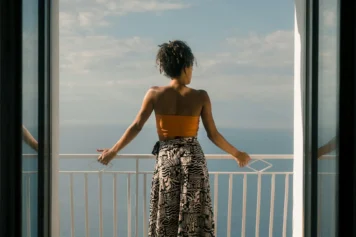For the first time in four hours, my tour guide on Lanai is at a loss for words.
We’re staring at what could be a set from Lost: a broad, sandy beach devoid of people, a scattering of derelict huts among palm trees and an empty pier, all about a 45-minute bumpy ride from the nearest pavement. Until recently, dense growth hid much of these remains, which are of an old day-tripper resort called Club Lanai, closed since 1996.
“This is unbelievable,” Bruce Harvey, a veteran guide with Rabaca’s Limousine Service, finally manages. “It’s only two months since I’ve been down here. This is good to see.”
Born and raised in Honolulu, Harvey has lived on Lanai since 1999, when he began reading everything he could about its environment and history. But even those deeply versed in the island’s past are finding it hard to keep up with what’s going on in the present: Thanks to new owner and Oracle CEO Larry Ellison, changes are coming at Silicon Valley speeds to the former Pineapple Island.
Just a few hours after my all-day SUV tour ended, Ellison’s representative announced plans for a “sustainable” resort at Club Lanai – explaining the recent cleanup – as well as for a water desalinization plant, an expanded solar farm, a medical evacuation helicopter and a parallel airport runway for larger planes, according to Charity Texeira of Lanai Visitors Bureau. “We’re going to have to make a few changes, but it’s for the good of the community,” she notes.
By most accounts, the changes Ellison has already enacted since acquiring 98 percent of the island (including its two Four Seasons resorts) in June have been positive. He quickly won widespread support by reopening the public pool, refurbishing basketball courts, repainting employee housing and adding picnic tables amid the towering Cook Island pines of Dole Park.
Surrounded by quaint stores, art galleries and a half dozen modest restaurants, the park is the central gathering place of the 13-by-18-mile island’s lone town, the hyperbolically named Lanai City. Its population was 3,100 in 2010, but has dropped an estimated 500 because of unemployment – a trend that Ellison’s remodeling projects are starting to reverse. Many residents tell me they are particularly grateful about what he isn’t building: the controversial wind turbines formerly proposed by the island’s last owner, Castle & Cooke magnate David Murdock, near pristine Polihua Beach.
Read more: SFChronicle


